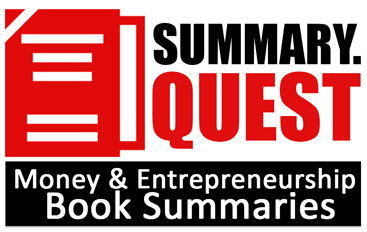Hey, folks! Today we’ll delve into the transformative insights of “Give and Take” by Adam Grant, where the art of giving and receiving takes center stage. Get ready for a comprehensive breakdown unveiling the secrets of mastering reciprocity. Whether you’re aiming to redefine success, polish your networking skills, or navigate the delicate balance between giving and receiving in various aspects of life, this post has got you covered. So, let’s roll up our sleeves, dive into the goodness of ‘Give and Take,’ and revamp how you tackle success!
Key Idea No. 1: Givers, Takers, and Matchers

In the fast-paced world of professionals and workplaces, success isn’t just about personal accomplishments; it hinges on our interactions with others. Navigating the professional arena effectively involves understanding the roles of takers, givers, and matchers.
Takers aim to get more than they give, believing the world is a competitive place. They’re cautious and self-protective, looking out for themselves first. Conversely, givers lean towards generosity, sharing time, energy, and knowledge.
Now, you might think givers would end up at the bottom of the success ladder, but surprisingly they’re often at the top. The key lies in how givers approach success. Instead of claiming value, they create a ripple effect, enhancing the success of those around them. When givers win, people root for them.
The key lies in their unique approach. Successful givers aren’t pushovers; they’re ambitious and strategic. They give first, and it positions them for success later. This goes against the common belief that you succeed first and give back later. But how do givers avoid being at the bottom? It’s not about being exceptionally nice or altruistic; it’s about the strategies they use and the choices they make. They are as ambitious as takers but with a different approach.
However, in the workplace, many of us fall into a third category: matchers. They believe in fairness, operating on a tit-for-tat basis. But most people tend to have a primary style – either giver, taker, or matcher – which significantly influences their success.

In today’s interconnected and service-oriented professional landscape, giving takes center stage. Teams rely on givers to share information and support, and service jobs highly value relationships and reputations. It’s not just a moral choice; it’s a strategic move for success.
Let’s debunk a myth here – giving isn’t a zero-sum game where one person’s success means another’s failure. In fact, the author has shared real-life examples and studies that prove giving can be a powerful and advantageous strategy for success.
Now, how can you apply this in your professional journey? Consider adopting a giver mentality. Share your knowledge, time, and support with your colleagues. Be ambitious in your pursuits, but remember that your success doesn’t have to come at the expense of others. Embrace the interconnected nature of today’s workplaces, and watch how your generosity creates a positive wave of success around you.
Key Idea No. 2: The Art of Networking
In the dynamic landscape of professional success, the significance of cultivating robust networks cannot be overstated. Your network can be the key to unlocking private information, acquiring diverse skills, and wielding influence, propelling you towards higher performance and faster career advancement.
However, the presence of takers in professional relationships, individuals who are friendly only when they need a favor, can cast a shadow on the networking process. Identifying these takers, who often disguise themselves as givers, is crucial for maintaining genuine connections.

To hone the skill of recognizing such individuals, it is essential to pay attention to behavioral cues, language use, and online presence. Research indicates that takers tend to use self-centered language, prioritizing ‘I’ over ‘we.’ In the age of online networking, social media profiles can serve as revealing indicators, with takers often posting content that is self-promoting.
Reciprocity is the mutual exchange of favors or benefits with the expectation of similar actions in return. Both takers and matchers might help you only if they think you can help them back. This calculated approach, while effective in some scenarios, can lead to perceptions of manipulation and may limit the breadth of one’s network. On the contrary, adopting a giver mentality, focusing on helping others without immediate expectations, can lead to a more expansive and fulfilling network.
So, what actionable steps can you take to implement these insights into your own professional journey? Embrace a giving approach to networking. Instead of solely seeking personal gain, consider what you can contribute to others.
Make this approach a part of your daily interactions, whether online or offline. Seek opportunities to support your network without expecting an immediate return. Share your knowledge, offer assistance, and authentically connect with others. Over time, this giving approach can result in a broader and more rewarding network.
Remember, networking is a two-way street, but it’s the givers who often find themselves on the path to long-term success. Shift your focus from merely taking advantage of connections to creating meaningful, reciprocal relationships. In doing so, not only do you build a robust network, but you also contribute positively to the professional ecosystem you are a part of.
Key Idea No. 3: Perspective Gap
In the intricate web of human interactions, the perspective gap often emerges as a significant barrier to effective collaboration. This gap refers to the challenge individuals face when trying to comprehend viewpoints different from their own.
In the realm of collaboration, understanding others’ contributions goes beyond just sharing credit; it involves bridging the perspective gap. This ability to empathize and connect with colleagues becomes crucial in emotionally charged situations where criticism is taken personally.

A compelling illustration of the perspective gap is derived from an experiment detailed by the author, wherein people underestimated the pain of sitting in a freezing room after submerging their arm in ice water. This highlights our innate tendency to undervalue the impact of intense experiences when we are not directly undergoing them – a clear manifestation of the perspective gap.
The challenge, then, lies in stepping outside our own frame of reference. Successful collaboration hinges on the ability to perceive the world through the eyes of others. This skill, as revealed by a study involving toddlers, is not innate but can be developed. It involves understanding, early in life, that collaboration is not just about completing tasks jointly but about appreciating and supporting each other.
To effectively bridge the perspective gap, consider the following actionable tips:
- Cultivate Empathy: Start by actively cultivating empathy. Seek to understand the experiences and emotions of your colleagues. This goes beyond a passive acknowledgment of differences; it involves a deliberate effort to develop a compassionate and open-minded approach to diverse perspectives.
- Encourage Dialogue: Open and respectful dialogue is a cornerstone in overcoming the perspective gap. Establish spaces where individuals feel safe expressing their opinions and engaging in constructive conversations. This not only fosters understanding but also helps dismantle stereotypes and preconceived notions.
- Promote Diversity and Inclusion: In every facet of life, promoting diversity and inclusion is paramount to closing the perspective gap. Embrace a variety of perspectives, backgrounds, and experiences. By doing so, you create environments that reflect the richness and diversity of our global society.
Key Idea No. 4: The Power of Powerless Communication
In the art of persuasion, whether you’re selling a product, pitching an idea, or seeking an investment, the key lies in effective influence. There are two paths to this influence: dominance and prestige. Dominance relies on projecting strength, while prestige is earned through respect and admiration. Although dominance might seem forceful, it’s prestige that proves to be the more sustainable and effective route to sway opinions.
Contrary to the common belief that assertiveness is always crucial, there’s a powerful approach that often goes unnoticed. Givers utilize a seemingly powerless communication style that actually builds prestige effectively. They ask questions, admit weaknesses, and seek advice. This challenges the notion that powerless communication is a disadvantage, especially in activities like presenting, selling, persuading, and negotiating.
Givers find strength in prioritizing others over gaining power, and they find comfort in expressing vulnerability. Surprisingly, showing vulnerability can enhance prestige, but it works best when the audience already recognizes competence in the speaker. If the speaker lacks expertise in their field, this vulnerability can backfire.

In the realm of sales, givers excel by asking questions that create opportunities for customers to share about themselves, building rapport effectively. Questions about positive intentions, such as purchasing a new computer, increase the likelihood of action. However, the success of this strategy depends on the desirability of the intended actions. Questions work well for encouraging positive behaviors but are less effective for undesirable actions.
Givers often employ powerless speech, characterized by hesitations and tag questions. Talking tentatively can be a powerful tool, especially in fields like sales and creative collaboration. People tend to be more receptive to tentative talk as it signals a giver mentality, earning greater respect and influence.
In negotiations, seeking advice is viewed as a form of powerless communication. Givers, unlike takers and matchers, are more inclined to seek advice, demonstrating genuine interest. Seeking advice has benefits such as learning, perspective-taking, commitment, and flattery. It can lead to valuable information, change perspectives, and foster commitment.
Seeking advice also grants prestige to the adviser, showcasing respect for their insights. The effectiveness of advice seeking hinges on its authenticity. Genuine advice seeking tends to be more successful than strategic or manipulative attempts.
Givers naturally incorporate this communication style to establish sincere connections. Expressing vulnerability, asking questions, talking tentatively, and seeking advice can enhance a giver’s influence, contributing to success in networking, collaboration, and work-related scenarios. While not every giver may use powerless communication, those who do often find it valuable in building rapport and trust.
Key Idea No. 5: Dealing with Burnout
Giving is a wonderful thing, but it’s crucial to avoid burnout. Putting too much into helping others can leave you drained and unproductive. If you overcommit to others, it can harm your own interests, creating a downward spiral. Even being overly selfless, prioritizing others over yourself, can be counterproductive and hurt your well-being. The key is finding a balance.

Successful givers know this balance well. Take Bill Gates, for example. He emphasizes that being successful involves both caring for others and pursuing your own interests. It’s not one or the other; it’s a mix of both. These successful givers are called “otherish.” They genuinely care about helping others, but they also have ambitious goals for themselves. This balance allows them to give a lot while still focusing on their own interests.
In fields like healthcare and education, burnout is a real issue. Teachers, for instance, might feel burnout because the impact of their work takes time to show. This lack of immediate affirmation can make their efforts feel exhausting. To tackle this, a strategic approach is needed.
One effective strategy is called “chunking.” This means optimizing when you give to maintain energy levels. It’s about giving in focused bursts rather than sprinkling it throughout the day. This approach helps prevent exhaustion and allows you to be more effective in your own work.
There’s also the 100-Hour Rule of Volunteering. Research suggests that volunteering more than 100 hours starts to provide diminishing returns. So, committing about two hours a week seems to be the sweet spot. This balance lets you make a meaningful difference without overwhelming yourself or sacrificing other priorities.

Otherish givers also actively seek help when they feel burnout approaching. Instead of waiting until they’re completely exhausted, they gather advice, assistance, and resources to maintain their motivation and energy levels.
In conclusion, impactful giving isn’t just about the act itself. It’s about having a strategic approach and mindset. Understanding the principles of giver burnout, making otherish choices, and following the 100-Hour Rule of Volunteering can create a culture of giving that’s fulfilling and sustainable for both the giver and the recipients.
Key Idea No. 6: Art of Giving and Receiving
Understanding how people give and take is not as straightforward as it may seem. We often rely on surface-level cues, like whether someone is agreeable or disagreeable. Agreeable folks come off as cooperative and polite, while the disagreeable ones seem more competitive and critical. But here’s the catch: these personality cues don’t tell the whole story.
The reality is, whether someone is a giver or a taker depends on their choices, motives, and values. It’s not just about being agreeable or disagreeable.

Research shows that, surprisingly, givers are better at reading others than matchers and takers. Givers pay close attention to people’s actions and are tuned into their thoughts and feelings. Their habit of trusting others gives them an edge in spotting a wide range of behaviors.
But, Givers can be at a disadvantage when they don’t use their deep understanding of the gap between surface behaviors and underlying motives. The habit of giving first and questioning later can compromise their ability to screen for sincerity.
Successful givers get this. They know that screening for sincerity is crucial. So, they adjust by becoming matchers when dealing with potential takers. It’s a give-and-take strategy where cooperation is followed by occasional competition. This helps givers strike a balance between rewarding giving and discouraging taking. Sure, it comes with risks, but in a world where relationships and reputations are on display, this approach tends to dominate.

This strategy is called “generous tit for tat.” It’s a bit “otherish,” meaning givers start with trust but adjust their approach when dealing with possible takers. Otherish givers believe in giving people the chance to prove themselves.
Now, what does all this mean for you? Start by being aware of your assumptions based on surface behaviors. Instead of judging someone solely on whether they seem like a giver or a taker, dig deeper into their motives and values. If you sense someone might be a taker, tweak your approach. Begin with trust, but be ready to adapt based on the situation. It’s all about finding the right balance in how you give and take in your relationships.
In conclusion, the insights shared here only scratch the surface of the profound concepts explored in the best-selling book ‘Give & Take.’ If you’ve found these ideas valuable and wish to delve deeper into the transformative journey the book offers, I highly recommend grabbing your own copy.

Leave a Reply